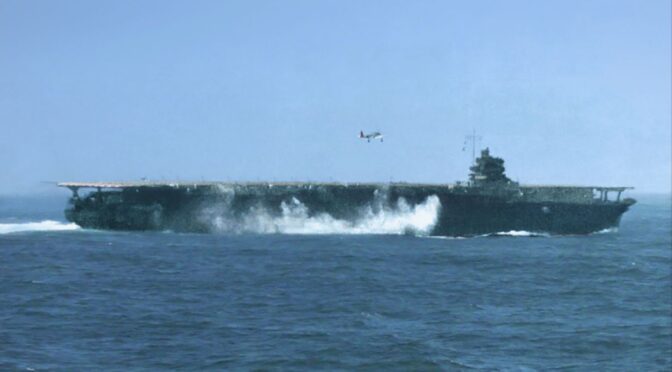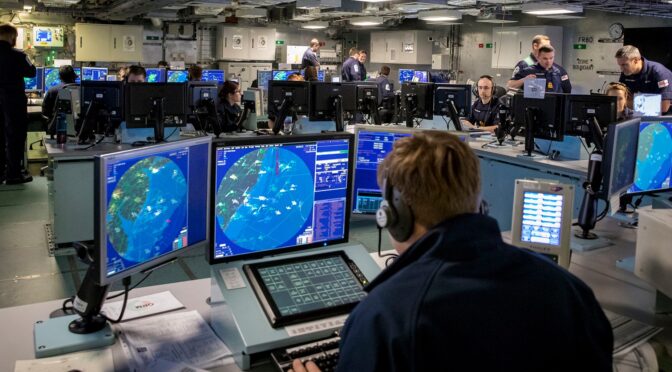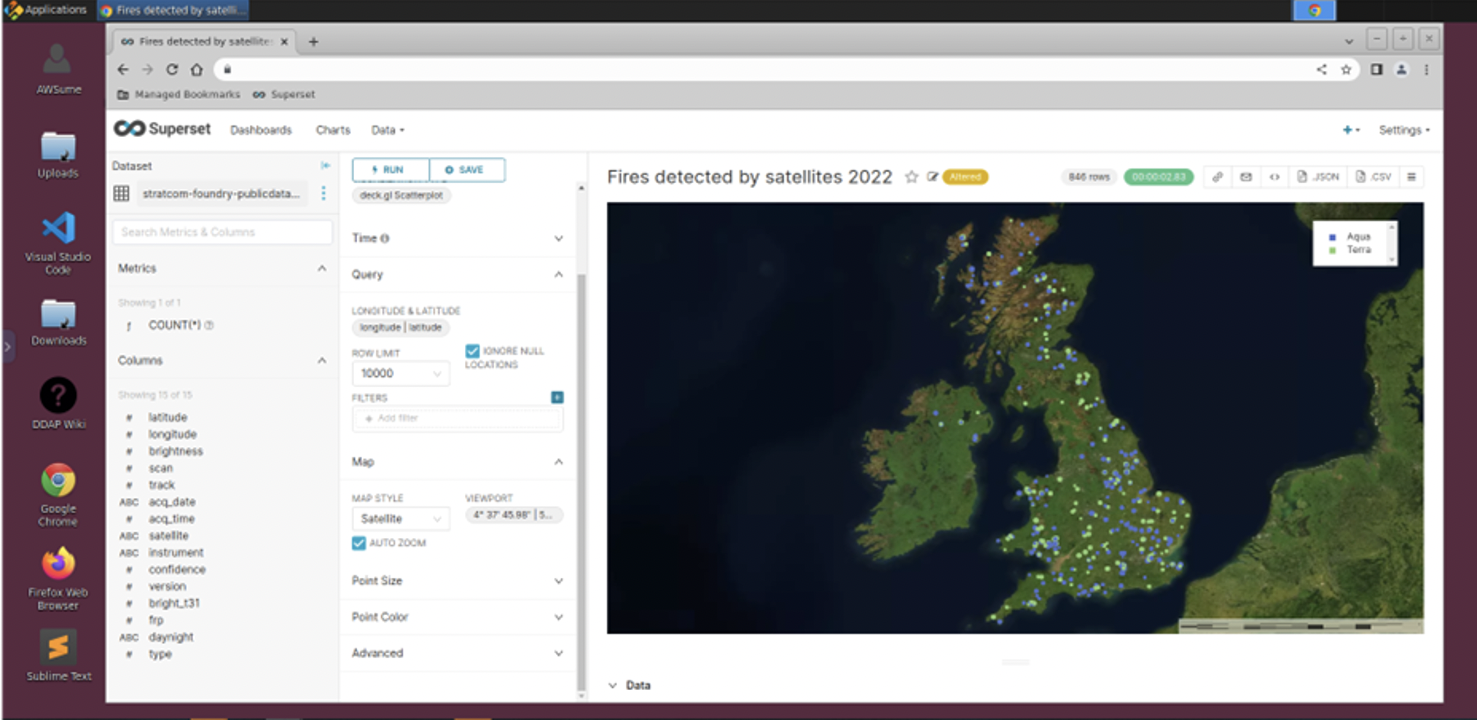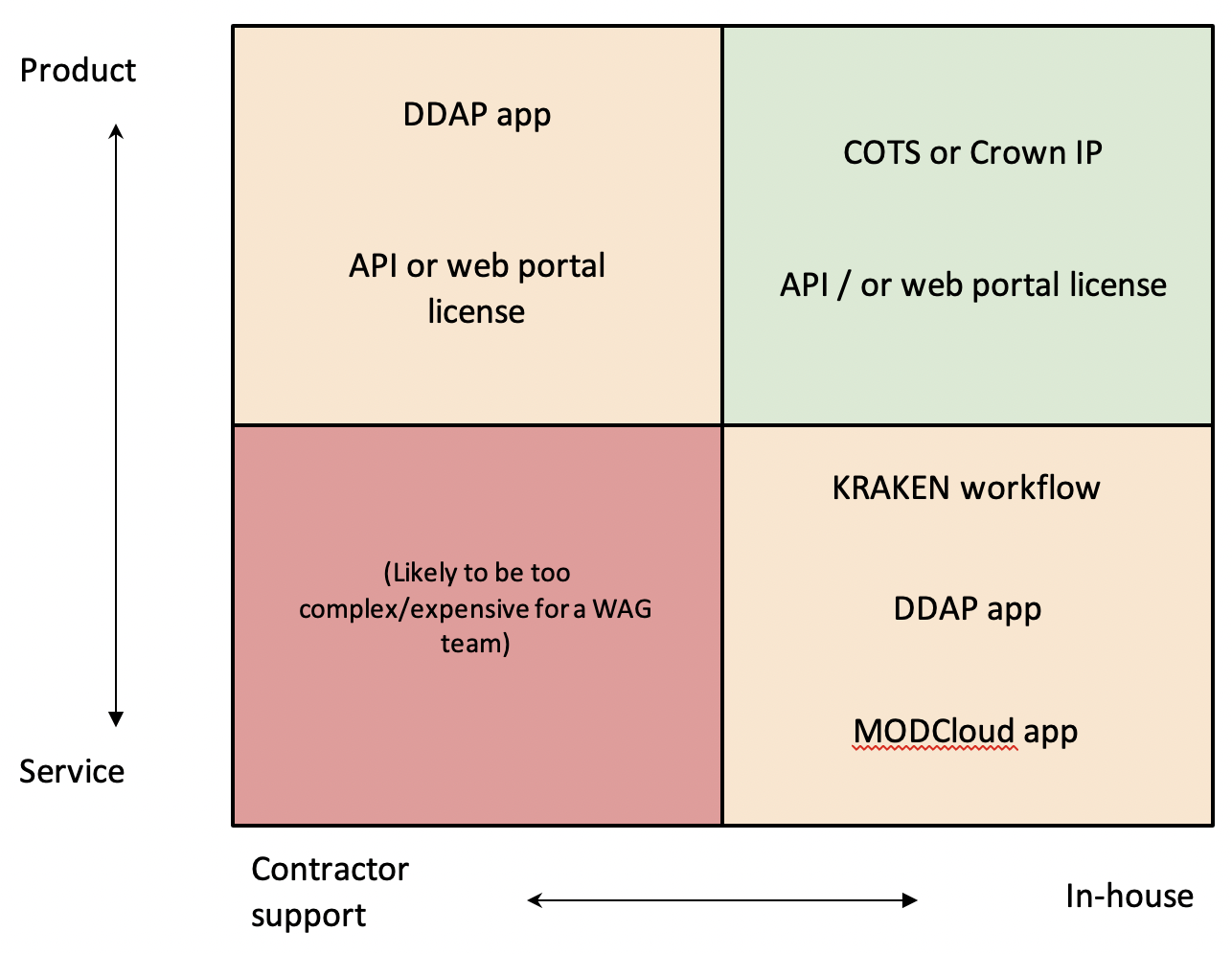By Alex Crosby
Following the attack on Pearl Harbor, Japan’s options for attaining a favorable war termination diminished to a handful of feasible strategies. The United States, emboldened by the surprise bloodshed, committed to an unlimited war with Japan unless de-escalation or a viable forced negotiations option were presented.1 Japan did not pursued several alternative strategies to achieve a favorable outcome in its war against the United States. First, Japan possessed the ability to prevent attrition of critical wartime capabilities, including aviation assets and merchant shipping, but did not preserve critical combat power. Second, Japan did not sufficiently concentrated its combat power towards exploiting strategically beneficial offensives before the end of 1942. Finally, Japan underutilized its diplomatic and information means of national power. If Japan employed these alternative strategies, American’s willingness for war termination negotiations and the chances of Japan achieving its strategic objectives would have increased.
Preventing Attrition of Critical Wartime Capabilities
By preventing overwhelming attrition of its critical wartime capabilities, especially in the early stages of the war, Japanese could have applied its combat power to induce the United States to a negotiated war termination.2 Following the attack on Pearl Harbor and through the end of 1942, the United States shifted its focus to a theater-wide defensive posture while reconstituting and repositioning its combat power needed to confront Japan. America’s posture its forces for a campaign of cumulative attrition, allowing US forces to maintain the initiative and conduct systematic engagements to impose unsustainable military losses on Japan.
However, the American effort relied on friendly local forces alienated by the brutal Japanese occupations providing intelligence of Japanese force movements. This tactical intelligence proved fundamental for the attrition of Japanese aircraft and pilots traveling between Rabaul and Guadalcanal, eroding Japanese air combat power.3 Japan’s did not focus on limiting their intelligence flow from alienated civilians, either through coercive or forceful means, to prevent attrition of its critical land-based aviation and pilots. Likewise, Japan did not sufficiently collect and exploit intelligence about the United States as it had during the first few months following Pearl Harbor to ensure naval aviation maintained combat loss mitigated initiatives.4
To further mitigate losses of its land and naval aviation capabilities Japan needed to focus on resource reallocation, pilot recovery operations, and maintaining aviation proficiency. After the initial offensives of 1941 and 1942, Japan depleted its aviation assets to dangerously low levels with no clear path for reconstitution. To prevent crippling attrition, Japan could have provided long-distance air support from Rabaul for the south Pacific. In addition, Japan was slow to recognize the future operational demand for greater quantities of its aviation assets and shift resources from obsolete programs like the superbattleship program.5
Finally, Japan’s inability to avoid detrimental losses of its proficient pilots by focusing on pilot recovery operations and rotating pilots to instruct recruits proved costly.6,7 At war initiation, Japan possessed a cadre of talented pilots. Japan’s failure to prioritized maintaining the cadre of skilled pilots negated their advantage they held at the start of the war. By capitalizing on early airpower concentrations and avoiding attrition of such a critical intellectual capability, Japan would have sustain its continued offensives with devastating efficacy and forced the United States to the bargaining table.8
The little attention paid to the protection of Japanese merchant shipping proved costly, as this non-military power was attrited to fatal levels and counted the early war American strategy of cumulative attrition.9 The tyranny of distance in the Pacific required significant quantities of merchant shipping to maintain the extensive sea lines of communications.10 Although Japan remained unaware, the United States had decrypted Japan’s merchant shipping communications. Japan did not appreciate the level of risk that existed and did not change its encryption following its attack on Pearl Harbor. This protection of vital communications would have blunted the American intelligence interception and decreased the Japanese merchant shipping attrition levels.11 American submarines posed the great threat to Japanese merchant shipping, but Japan was slow to recognize the threat and reallocate resources to convoy escorts and anti-submarine tactics.12 These ship-based efforts, coupled with land and naval aviation, would have preserved Japanese logistics and transportation capabilities for the necessary offensives to force the negotiated end of hostilities.13
Concentration of Combat Power for Strategic Offensives
Japan’s failure to concentrate its offensive combat early in the war to achieve decisive victories decreased the United States’ willingness to negotiate. In the early stages of conflict with the United States, an underlying aspect of Japanese wartime execution was a risk-averse approach to offensives. This piecemeal mindset led to debilitating attrition, such as the slow commitment to capturing and defending Guadalcanal.14 Rather than the piecemeal approach, Japan could have concentrated overwhelming force to attack the American forces and push eastwards through the Central Pacific.15 Overwhelming force coupled with Japan’s distinct naval warfare advantages could have proven decisive. The Japanese navy missed an opportunity to continued its fearsome offensives under cover of darkness and using sea control during the daytime.16
Japan did not focus its offensive combat power in bolder ways to achieve decisive action with strategic benefits. One operational line of efforts planned for but never executed was the use of Japanese submarines in the vicinity of Hawaii to sink American ships entering and leaving the port.17 This use of Japanese submarines, especially immediately following the attack on Pearl Harbor, would have crippled America ships and the limited aircraft carriers returning to port.
Japan did not concentrate its defensive combat power through the garrisoning of mutually supportive islands, a miscalculation American forces exploited. The isolated citadel strategy with its island defenses proved vulnerable to the American leapfrogging approach.18 Vast distances between these islands were often equivalent to the coast-to-coast span of the United States and placed a tremendous strain on supply chains, resulting in non-combat-related losses for aircraft.19 Concentrating defensive combat power on mutually supportive islands, Japan could then bring to bear overwhelming firepower to deter American invasion plans or repel landing assaults.20 The practical approach to amphibious defensive warfare could have allowed for the coordination of simultaneous attacks on approaching American naval forces and limited the attrition of critical Japanese air power.21,22 The coordination of firepower from these mutually supportive islands, in the form of fixed artillery sites and land-based aviation, could have undermined American strategy and provided more effective safe havens for reconstituting Japanese forces.
With the concentration of offensive and defensive combat power, Japan did not launch audacious offensives before the end of 1942, which would have resulting in the decisive destruction of American naval forces. At the outset of the war, Japanese leadership recognized the industrial might of the United States would inevitably lead to defeat unless Japan could meet its principal military aims before the end of 1942.23,24,25,26 These bold offensives would have denied the United States strategic positions required for force projection, such as Guadalcanal, and disrupted vulnerable sea lines of communication. 27 Japanese offensives should have targeted Ceylon and Australia to threaten Allied capabilities to support American force movements and draw American carriers, still few in numbers and lacking proven doctrine, to more threatening operating areas. 28,29 The Indian Ocean would have been an area of strategic gain for Japan should it have employed its submarine force, away from Allied air cover, to conduct convoy raiding on Lend-Lease merchant vessels transiting to support Russia via the Middle East.30,31 Most significantly, Japan should have executed its planned invasion of Hawaii, which would have directly threatened Alaska, the West Coast, and the Panama Canal.32,33 These three locations were of particular concern for the United States, while increasing their willingness to negotiate a peace settlement.34
Employing Diplomatic and Information Means
Aside from preventing attrition and concentrating combat power, Japan did not exploit its diplomatic and information leverage to force negotiations with the United States. The United States remains concerned about Japan’s involvement within the Tripartite Pact. Japan could have exploited this opportunity by quickly pulling out of the Tripartite Pact after Pearl Harbor to unburden itself from the disjointed German and Italian war aims.35 The Tripartite Pact forced Japan into close relations with Germany and Italy, both had their own strategic objectives and were so distanced that any significant resource or military assistance to Japan was impractical.36 By distancing itself diplomatically from Germany and Italy, Japan could have vastly complicated President Roosevelt’s strategic calculus for publicly justifying the war in Europe to the American people. 37 A rapid exit from the Tripartite Pact would have negated the risk of Germany and Italy declaring war on the United States, which bolstered the American public’s emotions for hatred and revenge.38
Japanese exploitation of divisions within the Allies, either via diplomatic or information means, could have also proved beneficial for several reasons. First, China was a significant cause of manpower attrition for the Japanese, aggravated by the increasing influx of Allied military assistance.39 If Japan could have diplomatically severed this assistance, it could have detracted the Allied political interest within the region and ensured Japan’s status as the regional hegemony. Second, a point of possible exploitation could have been isolating Australia and India diplomatically from Great Britain by highlighting the ongoing colonial ambitions of Winston Churchill. Australia, India, and to a lesser extent, smaller Asian countries, had existing ambitions to separate themselves from Great Britain.40 Japan should have exploited these divisions and fractured British equities, which would have decreased the political interest in the region.
Japan should have highlighted the forcefulness of American leadership over Allied strategy and policy. This messaging should have sought to use American aggressiveness over its allies as a rationale for degrading the United States’ access to critical military facilities in the south and central Pacific.41 With distinct divisions amongst the Allies, Japan should have exploited opportunities to fracture away as much support for the United States as possible.
Although Japan used propaganda to a limited extent against deployed American forces, Japan did not sufficiently target the domestic American population. During the early stages of the war, Japan used propaganda as a leading tool of its national strategy with strategic success.42 Japan missed an opportunity to wield this capability with devastating effects by highlighting perceived British ambitions to expand its colonial rule against southeast Asian nations.43 Additionally, Japan did not highlight the enormous financial costs of General MacArthur’s self-imposed Philippine Campaign, which could eroded the American public’s support against any continued intervention in the Philippines.44,45
Japan did not focus on weakening the American public’s view of the Pacific Fleet serving as a mobile defensive line early in the war. By messaging the Pacific Fleet as an ineffective deterrent fleet incapable of preventing further Japanese aggression, combined with a decisive attack, would have potentially dissolved the America public’s belief in the West Coast’s safety.46 This emphasis on diminishing the morale of the American people could have been a focal point of Japanese strategy to circumvent the domestic calls for total national unity.47 With the will of the American people depleted, the chances of a negotiated war termination would have likely increased in Japan’s favor.
Counterargument and Rebuttal
Some might argue that the Japanese wait-and-react strategy served as a better solution for ensuring a favorable outcome with the United States. This strategy was structured to combine phased combat actions to achieve the complete destruction of American naval power in the Pacific Ocean. First, Japanese naval forces would search for and annihilate American naval forces permanently stationed or operating in the western Pacific Ocean. Next, Japan would conduct a series of minor naval engagements to attrite an American main battle force moving westward to relieve or recapture American territories like Guam. Finally, Japan would seek to decisive engagement, decimate the American naval forces to force negotiations for war termination.48
The attack on Pearl Harbor, and the initial stages of the war, shaped by strategic assumptions fundamental to the wait-and-react strategy remained valid throughout the Interwar Period. First, the Japanese assumed it would achieve its war aim following a rapid, decisive offensives, forcing the United States into peace negotiations. Second, the Japanese navy’s was to gain sea control needed for conflict success, enabling the capture of a strategic position essential for the survival of Japan following the war, and ensure the future prosperity of Japan. In the minds of the Japanese, the western and central Pacific were the defining features of these geographic considerations. Third, Japanese navy leadership remained adamant that only decisively defeating the American battle fleet guaranteed sea control. Fourth, suppose if Japan could not confront the United States with equal or greater numbers of ships. In that case, Japan could negate with ship overmatch with superior firepower, armor, training, and outranging technology such as carrier-borne aviation. Finally, the victory following a decisive naval battle would ensure the Japanese homeland security needed for prosperity and lead directly to a negotiated peace with the United States.49
Despite these contrary views, the wait-and-react strategy was a doomed path for Japan to remain on without considering alternative strategies that would have better enabled a negotiated war termination with the United States. A significant piece of evidence for this is that Japan blatantly violated its own fundamental axiom of grand strategy, which was the principle of fighting only one enemy at a time.50 Additionally, key Japanese naval leadership, including Yamamoto Isoroku, Ozawa Jisaburo, and Onishi Takijiro, guarded criticisms for the wait-and-react strategy. First, it relied entirely on the United States being a cooperative adversary and left the initiative of location and time for naval engagement with the Pacific Fleet. Second, the nature of offensive naval power had transitioned from the battleship-based fleet to one reliant on carrier-based aviation: a transition that required a more risk-averse (and thus less offensive) mindset to prevent loss of expensive carriers that would be troublesome to reconstitute during the conflict.
Finally, even with the introduction of carriers, the confrontation between Japan and the United States would still ultimately focus on critical airbases and facilities, predominately throughout the central Pacific.51 To rationalize both these criticisms and the fundamental tenets of wait-and-react, the Japanese navy sought a carrier aviation-based pre-emptive strike deep at Pearl Harbor to decisively defeat the Pacific Fleet. However, no legitimate plan was devised to transition to war termination through a negotiated settlement. 52 This execution of wait-and-react military strategy without the diplomatic ammunition to support it left Japan in a precarious situation that slowly but surely, led to Japan’s defeat.
Lieutenant Commander Crosby, an active duty naval intelligence officer, began his career as a surface warfare officer. His assignments have included the USS Lassen (DDG-82), USS Iwo Jima (LHD-7), U.S. Seventh Fleet, and the Office of Naval Intelligence, with multiple deployments supporting naval expeditionary and special warfare commands. He is a Maritime Advanced Warfighting School–qualified maritime operational planner and an intelligence operations warfare tactics instructor. He holds master’s degrees from the American Military University and the Naval War College.
Endnotes
1. Paine, Sarah C. M. The Wars for Asia, 1911-1949. New York: Cambridge University Press, 2012. 189.
2. Lee, Bradford A. “A Pivotal Campaign in a Peripheral Theatre: Guadalcanal and World War II in the Pacific.” In Naval Power and Expeditionary Warfare: Peripheral Campaigns and New Theatres of Naval Warfare. Bruce A. Elleman and S. C. M. Paine, eds. London and New York: Routledge, 2011. 84.
3. Ibid., 94.
4. Evans, David C. and Mark R. Peattie. Kaigun: Strategy, Tactics, and Technology in the Imperial Japanese Navy, 1887-1941. Annapolis: Naval Institute Press, 1997. 470-471.
5. Warner, Denis and Peggy. “The Doctrine of Surprise”; Miller, Edward S. “Kimmel’s Hidden Agenda”; and Cohen, Eliot A. “The Might-Have-Beens of Pearl Harbor.” MHQ: The Quarterly Journal of Military History, vol. 4, no. 1 (autumn 1991). 23.
6. O’Brien, Phillips. How the War Was Won: Air-Sea Power and Allied Victory in World War II. Cambridge: Cambridge University Press, 2015. 385.
7. Baer, George W. One Hundred Years of Sea Power: The U.S. Navy, 1890-1990. Stanford: Stanford University Press, 1994. 221.
8. O’Brien, Phillips. How the War Was Won: Air-Sea Power and Allied Victory in World War II. Cambridge: Cambridge University Press, 2015. 375.
9. Wylie, J. C. Appendix A, “Excerpt from ‘Reflections on the War in the Pacific.’” In Military Strategy: A General Theory of Power Control. New Brunswick: Rutgers University Press, 1967. Annapolis: Naval Institute Press, reprint, 1989. 119.
10. James, D. Clayton. “American and Japanese Strategies in the Pacific War.” In Makers of Modern Strategy: From Machiavelli to the Nuclear Age. Peter Paret, ed. Princeton: Princeton University Press, 1986. 717.
11. Ibid., 729.
12. O’Brien, Phillips. How the War Was Won: Air-Sea Power and Allied Victory in World War II. Cambridge: Cambridge University Press, 2015. 417.
13. Evans, David C. and Mark R. Peattie. Kaigun: Strategy, Tactics, and Technology in the Imperial Japanese Navy, 1887-1941. Annapolis: Naval Institute Press, 1997. 485.
14. James, D. Clayton. “American and Japanese Strategies in the Pacific War.” In Makers of Modern Strategy: From Machiavelli to the Nuclear Age. Peter Paret, ed. Princeton: Princeton University Press, 1986. 718.
15. Lee, Bradford A. “A Pivotal Campaign in a Peripheral Theatre: Guadalcanal and World War II in the Pacific.” In Naval Power and Expeditionary Warfare: Peripheral Campaigns and New Theatres of Naval Warfare. Bruce A. Elleman and S. C. M. Paine, eds. London and New York: Routledge, 2011. 88.
16. Ibid., 92.
17. Baer, George W. One Hundred Years of Sea Power: The U.S. Navy, 1890-1990. Stanford: Stanford University Press, 1994. 171.
18. Larrabee, Eric. Commander in Chief: Franklin Delano Roosevelt, His Lieutenants and Their War. New York: Simon and Schuster, 1987. Annapolis: Naval Institute Press, reprint, 2004. 339.
19. O’Brien, Phillips. How the War Was Won: Air-Sea Power and Allied Victory in World War II. Cambridge: Cambridge University Press, 2015. 409.
20. James, D. Clayton. “American and Japanese Strategies in the Pacific War.” In Makers of Modern Strategy: From Machiavelli to the Nuclear Age. Peter Paret, ed. Princeton: Princeton University Press, 1986. 718.
21 Ibid., 719.
22. Evans, David C. and Mark R. Peattie. Kaigun: Strategy, Tactics, and Technology in the Imperial Japanese Navy, 1887-1941. Annapolis: Naval Institute Press, 1997. 466.
23. Lee, Bradford A. “A Pivotal Campaign in a Peripheral Theatre: Guadalcanal and World War II in the Pacific.” In Naval Power and Expeditionary Warfare: Peripheral Campaigns and New Theatres of Naval Warfare. Bruce A. Elleman and S. C. M. Paine, eds. London and New York: Routledge, 2011. 88.
24. James, D. Clayton. “American and Japanese Strategies in the Pacific War.” In Makers of Modern Strategy: From Machiavelli to the Nuclear Age. Peter Paret, ed. Princeton: Princeton University Press, 1986. 707-708.
25. Baer, George W. One Hundred Years of Sea Power: The U.S. Navy, 1890-1990. Stanford: Stanford University Press, 1994. 159.
26. Ibid., 169.
27. Lee, Bradford A. “A Pivotal Campaign in a Peripheral Theatre: Guadalcanal and World War II in the Pacific.” In Naval Power and Expeditionary Warfare: Peripheral Campaigns and New Theatres of Naval Warfare. Bruce A. Elleman and S. C. M. Paine, eds. London and New York: Routledge, 2011. 84-85.
28. Ibid., 86-87.
29. O’Brien, Phillips. How the War Was Won: Air-Sea Power and Allied Victory in World War II. Cambridge: Cambridge University Press, 2015. 391.
30. Ibid., 418.
31. Baer, George W. One Hundred Years of Sea Power: The U.S. Navy, 1890-1990. Stanford: Stanford University Press, 1994. 209.
32. Larrabee, Eric. Commander in Chief: Franklin Delano Roosevelt, His Lieutenants and Their War. New York: Simon and Schuster, 1987. Annapolis: Naval Institute Press, reprint, 2004. 364-365.
33. Baer, George W. One Hundred Years of Sea Power: The U.S. Navy, 1890-1990. Stanford: Stanford University Press, 1994. 210.
34. “The Blue Team: Documents on U.S. Policy, Strategy, and Operation1949. New York: Cambridge University Press, 2012. 186.
35. Evans, David C. and Mark R. Peattie. Kaigun: Strategy, Tactics, and Technology in the Imperial Japanese Navy, 1887-1941. Annapolis: Naval Institute Press, 1997. 454.s in the Pacific War.” 11.
36. Paine, Sarah C. M. The Wars for Asia, 1911-
37. James, D. Clayton. “American and Japanese Strategies in the Pacific War.” In Makers of Modern Strategy: From Machiavelli to the Nuclear Age. Peter Paret, ed. Princeton: Princeton University Press, 1986. 712-713.
38. Baer, George W. One Hundred Years of Sea Power: The U.S. Navy, 1890-1990. Stanford: Stanford University Press, 1994. 181.
39. James, D. Clayton. “American and Japanese Strategies in the Pacific War.” In Makers of Modern Strategy: From Machiavelli to the Nuclear Age. Peter Paret, ed. Princeton: Princeton University Press, 1986. 713, 716.
40. Paine, Sarah C. M. The Wars for Asia, 1911-1949. New York: Cambridge University Press, 2012. 198.
41. James, D. Clayton. “American and Japanese Strategies in the Pacific War.” In Makers of Modern Strategy: From Machiavelli to the Nuclear Age. Peter Paret, ed. Princeton: Princeton University Press, 1986. 723.
42. Ibid., 719-720.
43. Ibid., 722.
44. O’Brien, Phillips. How the War Was Won: Air-Sea Power and Allied Victory in World War II. Cambridge: Cambridge University Press, 2015. 382.
45. Larrabee, Eric. Commander in Chief: Franklin Delano Roosevelt, His Lieutenants and Their War. New York: Simon and Schuster, 1987. Annapolis: Naval Institute Press, reprint, 2004. 346.
46. Baer, George W. One Hundred Years of Sea Power: The U.S. Navy, 1890-1990. Stanford: Stanford University Press, 1994. 150.
47. Warner, Denis and Peggy. “The Doctrine of Surprise”; Miller, Edward S. “Kimmel’s Hidden Agenda”; and Cohen, Eliot A. “The Might-Have-Beens of Pearl Harbor.” MHQ: The Quarterly Journal of Military History, vol. 4, no. 1 (autumn 1991). 22.
48. Evans, David C. and Mark R. Peattie. Kaigun: Strategy, Tactics, and Technology in the Imperial Japanese Navy, 1887-1941. Annapolis: Naval Institute Press, 1997. 464.
49. Ibid., 480.
50. Ibid., 450.
51. Ibid., 472.
52. Warner, Denis and Peggy. “The Doctrine of Surprise”; Miller, Edward S. “Kimmel’s Hidden Agenda”; and Cohen, Eliot A. “The Might-Have-Beens of Pearl Harbor.” MHQ: The Quarterly Journal of Military History, vol. 4, no. 1 (autumn 1991). 25.
Featured Image: October 1941, Imperial Japanese Navy carrier Zuikaku at Bungo-channel. (Photo colorized by Irootoko Jr.)







